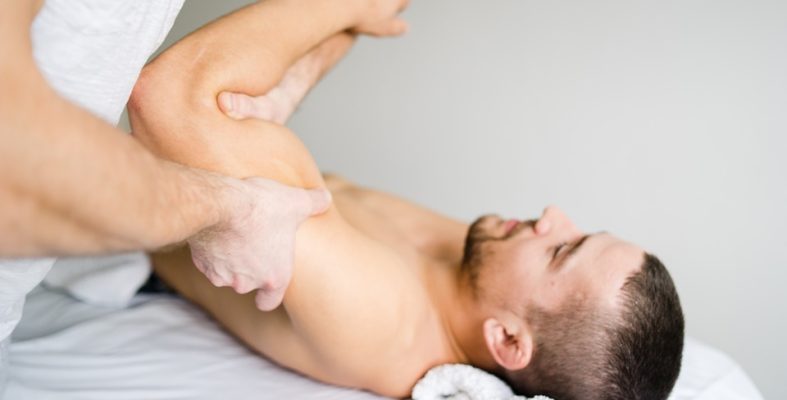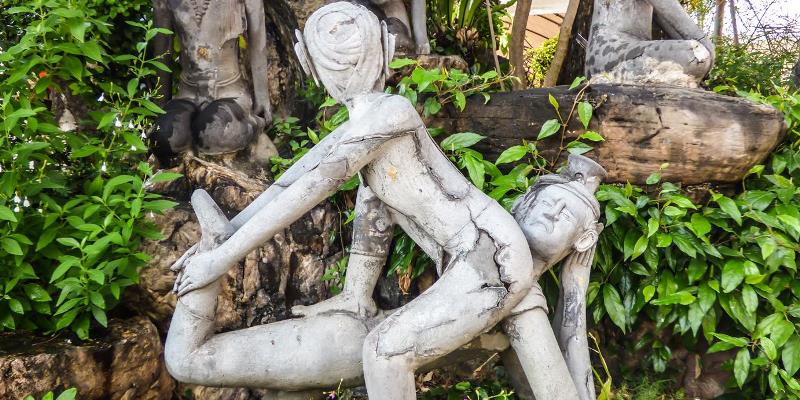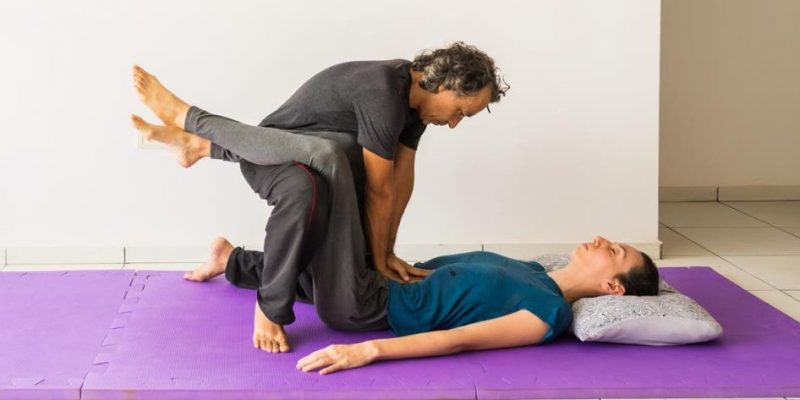
In Thai Massage, masseurs and therapists can use many of their body parts to give a massage. Most commonly these will be the hand palms and thumbs, but the knees, elbows, and/or feet are also very common tools to apply Thai Massage techniques with.

However, in this post we take a look at another popular use of the arms (apart from the elbow, hand palms, and fingers) and that is the forearm. In Thai Massage the forearms are typically used to roll over or press on muscles or muscle groups. It’s fairly common to see the forearm being used as depicted in the lead image of this post, that is, on the shoulder muscles (the trapezius).
In the case mentioned above, the technique is applied with the receiver placed in the sitting position, and the masseur will usually repeatedly roll with the forearm from near the neck to the end of the shoulder (to near the beginning of the arm), using the left and right forearms to massage either the left side of the trapezius or the right side. Often, the masseur will also press with the forearm on the trapezius muscles.
One of the great advantages of using the forearm roll in Thai Massage is that you can cover a wider area of muscle tissue in one go and create a kind of pleasant flow and feeling for the receiver. It’s also an excellent technique to work on the little knots and tangles in the muscles (it’s almost like using a dough roller kneading the dough to make it supple and smooth).
Additionally, for Thai Massage therapists, it’s a low-impact technique for their own bodies, and as such an extra means to prevent repetitive strain by using another body part to massage than only the hands or fingers.
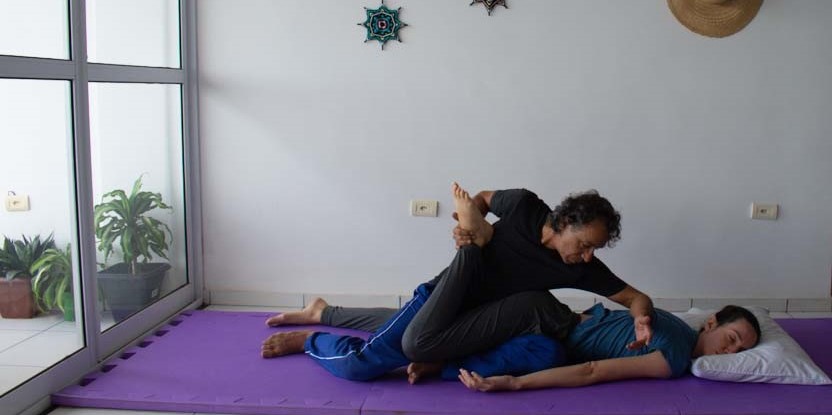
The forearm roll can also be used on other areas of the receiver’s body, such as the calf muscles and thigh muscles, but also across the back muscles as you can see me doing in the image above. Typically, the receiver will then be placed in other positions, such as the prone position, side-lying position, or supine position, instead of in the seated position.
Using the forearm in Thai Massage comes with a little catch though. There’s a certain way to do the technique so that it feels natural and comfortable for the receiver (and for the therapist). As a rule, the hand needs to be relaxed as from the wrist while rolling or pressing.
And I know this sounds perhaps a bit weird, but in Thailand the massage teachers often say to the students: “You should use ladyboy hand,” that is, keep the hand loosely hanging while rolling with the forearm. It’s somewhat like you can see in the image in this post where you see me using the forearm roll on the back muscles of the receiver, and in the image here directly below.
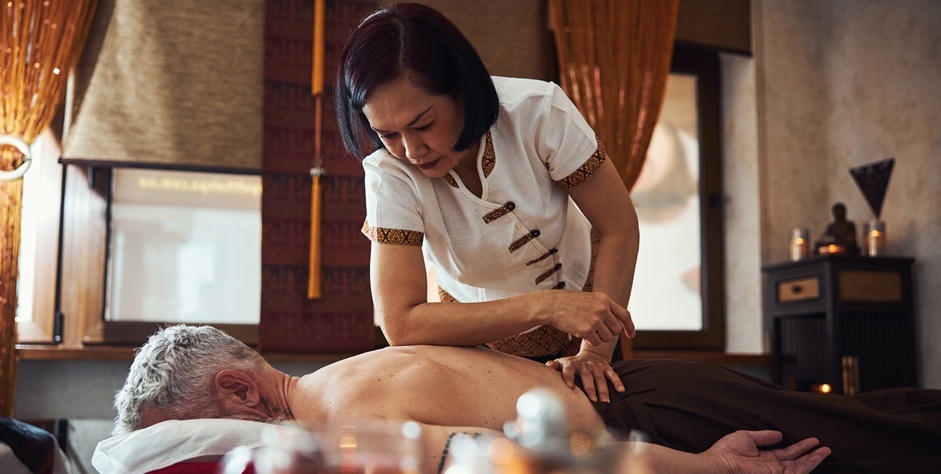
Nonetheless, it’s not uncommon at all to see masseurs doing the exact opposite, that is, make a fist and put power and tension in the hands while doing the forearm roll or press (as can be seen in the lead image of this post). As much is the case in Thai Massage, there’s probably not a real right or wrong here, just another feeling and result for both the giver and receiver.
Receive occasional news about our new eBook and Video Workshop publications.









